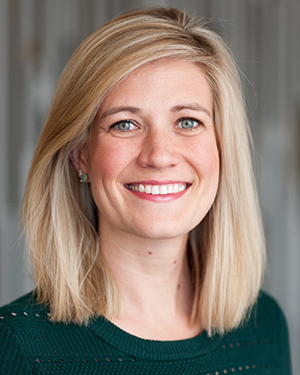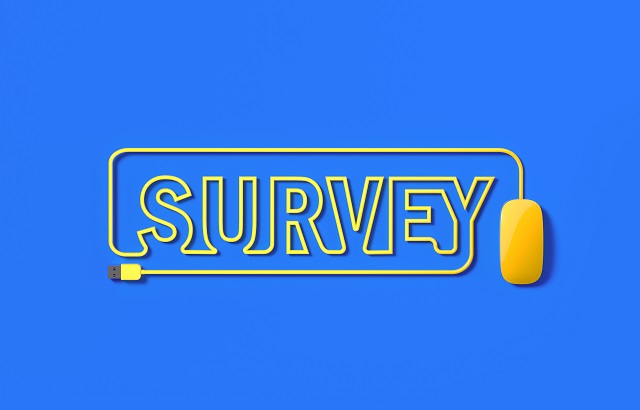[ad_1]
With high-net-worth individuals and their financial advisors showing a growing appetite for alternative investments, real estate asset managers are starting to adopt their strategies to court those capital sources by building up their relationships with RIAs. For CIM Group the move from relying largely on institutional investors to incorporating individual investors started in earnest six years ago with its purchase of Cole Capital, an investment manager with $7.6 billion in assets at the time, including five non-listed REITs and established relationships with independent broker-dealers and RIAs.
While some of its efforts to connect with financial advisors were disrupted by the pandemic—nothing beats meeting with advisors face-to-face, according to Emily Vande Krol, principal at CIM and president of CCO Capital LLC, its registered broker-dealer—the firm has continued to build up its wealth channel outreach capabilities in recent years. It aims to eventually reach a 50/50 balance among its capital sources between institutional and high-net-worth/individual investors.
To get there, CIM has split its wealth-focused team into three groups so that each group can pursue relationships with a particular segment of the wealth management industry, including broker/dealers, wirehouses and RIAs. To add to that specialization, plans are underway to create a platform that will focus on tax-advantaged investment strategies for the private wealth universe.
Meanwhile, on the external front, Vand Krol noted the firm has a partnership with fintech platform CAIS, which today supports more than 32,000 advisors.
“We were involved with them as a company very early on in their launch as we were intrigued by the technology side of the business that they were building,” Vande Krol said. In addition, “We were a first mover with them to raise our hand and say, ‘Let us work alongside you, let us be your test run of different asset classes in the alternative space.’”
Today, the firm has a variety of products that are accessible to individual investors with strategies ranging from core to opportunistic, some with a minimum requirement of just a few thousand dollars, she noted. In particular, CIM is currently focusing on investment opportunities in real estate credit and in infrastructure, including energy renewables, which have been areas where CIM has “excelled in previously” and which tend to be popular investment strategies in this market environment.
WealthManagement.com talked to Vande Krol about how the firm has been growing its offerings for individual investors, how it works together with the RIA and financial advisor community and how it views its role in the alternatives space.
This Q&A has been edited for length, style and clarity.
WealthManagement.com: I understand that historically the CIM Group has relied more on institutional investors for equity. So, I wanted to get a sense at what point did CIM decide that it would like to move also toward the wealth channel and what precipitated this move?

As we recognized those changes and our desire to access that larger pool of investors and start to offer what we had for institutions to financial advisors and intermediaries, we looked at it and [realized] the team that we had in place would not be able to cover the large stretch in demand of the RIA and the broker/dealer space. We acquired an organization [Cole Capital] in 2018 with a business that possesses the skill sets, the relationships and the distribution team specifically to foray into the private wealth space. We officially launched those efforts in 2018 and we’ve been refining it since.
WM: Does the firm have a breakdown in mind for, “We’d like for this share of our capital to come from the institutional side and this share from the wealth side”? How much would CIM like to grow its wealth business?
EVK: We would love to grow to a position where we are looking at, as a first hurdle, a 50/50 split between our wealth assets and our institutional assets. And a big piece of that is just continuing to refine our offerings in a way that fits the private wealth space and bring exactly what we’ve been doing for the institutional investors return-wise, asset opportunity-wise to private wealth.
WM: I am curious—after the acquisition of Cole Capital, did you hire any significant number of additional people to help with capital raising in the wealth space?
EVK: We did hire additional people. We have split our wealth team into three different groups, based on the type of advisor they would be calling on, making sure that we are aligning specifically with that space. So, we have a team that is focused on the independent broker/dealers. We have a team that is focused on our bank and wirehouse relationships. And then a team that is specifically focused on RIAs and high-net-worth individuals that would invest directly. We went from one team to a compilation of three channels.
WM: I understand you have a relationship with CAIS. If you can tell me how that relationship came about?
EVK: We were actually involved with them as a company very early on in their launch as we were intrigued by the technology side of the business that they were building. And as we’ve grown out of that, we were a first mover with them to raise our hand and say, “Let us work alongside you, let us be your test run of different asset classes in the alternative space.” So, we worked closely with them, for example, in starting to build a technology platform for our non-traded preferred and an opportunity to be able to streamline the processing on that.
They are a fascinating organization. They are obviously growing quickly and there are firms that will decide, and have [decided], that that’s the way they are going to process business. So, we wanted to make sure that we were aligned with them early on, so that CIM would continue to be an option to those advisors as they started to move on to the CAIS platform.
WM: In terms of reaching the wealth channel, reaching RIAs, reaching individual investors and getting them to invest with CIM Group’s opportunities, what have been the biggest challenges?
EVK: COVID hit right in the middle, so being able to reach financial advisors and RIAs as we started to shift into work from home was definitely a new challenge. I think we’ve adopted very well though. We look to meet the financial advisor or the RIA exactly where they are with the type of information and cadence and delivery that they need for their business.
We do a lot of face-to-face meetings and that’s starting to come back. To me, that’s where we are always going to have the greatest success, but we understand that’s not always possible. So, we sharpened ourselves on the delivery of virtual meetings, regular fund updates in a proactive way that they can access either via a live webinar or through recordings as well. And then, opportunities to be able to do thought leadership pieces, delivering that through social media and email.
We’ve needed to become more creative with how we deliver our communication to advisors because we all get inundated with phone calls, we all get inundated with emails and so finding that space to be able to have a conversation will continue to be the largest challenge.
WM: You mentioned thought leadership pieces that you are trying to get in front of advisors. How much education do you feel they need about opportunities that are available in commercial real estate, in real estate debt and other investments that CIM offers?
EVK: I think advisors are always looking for soundbites that they can utilize with their client. But, also, the space that they may be investing in, all of this moves so quickly. And as a financial advisor, when you are looking at the breadth of investment opportunities that you have you have to rely on your relationships with someone like CIM to be able to provide you the up-to-date soundbites that [show] you are staying up to speed on the ever-changing space, but have the confidence that they are the leader in the space as well.
We are trying to take that responsibility out of the hands of the financial advisor and feed it to them in a timely way in the areas and the asset classes where we are seeing some of the biggest changes. We’ve gone through a lot of market disruption over the last several years and [we are] trying to make it as easy for that advisor to get their snippets of information and feel confidence with who they are investing in and our areas of expertise. And then also confident in relaying that to their end investor.
WM: I know that CIM invests across different risk spectrums and different sectors. At the current moment, given the market environment we are in, are there certain types of assets or certain risk levels that the firm prefers to pursue?
EVK: Yes, we definitely have some frontrunners in areas that we are bullish on. CIM Group is vertically integrated and what that’s allowing us to do is really pivot with the asset classes and the structure that is most relevant for today’s market.
We are active in the three major asset classes, so we have real estate equity, debt and infrastructure and then we are starting to grow offerings in specific strategies around tax advantaged opportunities and that’s built specifically for the private wealth obviously and that need. For instance, right now we are extremely bullish in the private debt and debt opportunities within the marketplace. And then we also have seen this big shift into infrastructure, looking at data centers, solar, other renewable energy type of opportunities. They are very strong investment opportunities at this point and areas that we excelled in previously and can laser focus ourselves in those specific markets.
WM: In terms of specific products, what offerings do you have right now that are available to RIAs and individual investors? And what kind of response are you getting from them?
EVK: We have taken a laser focus on packaging our current institutional offerings for private wealth. I think we all know the popular buzzword of the day is “democratization” of alternatives. But what does that really mean?
So, making sure that we are offering opportunities for the lower investment requirements, lower suitability, that it can be invested in by a larger pool of investors. But what’s important to us is making sure that it stays the same quality investment that we offer institutional. With that you’ll see, for example, we have our closed-end interval product that is approved and we got exemptive relief on that, so that the private wealth investors are investing directly alongside some of our institutional funds. And that has been very well received in the marketplace, easy to do business in, which is always a plus as well and gives exposure to those institutional investments.
We also have an offering in the Opportunity Zone space. We have an infrastructure offering and we also have a private debt portfolio. Forward-looking, we are actively looking right now in the 1031 space as well for private wealth. That’s about the tax-advantaged platform that I mentioned earlier.
WM: You mentioned the lower investment requirements and lower suitability requirements to appeal to that wealth segment. Can you tell me what has been the lowest investment minimum that you’ve been able to offer on your products? Do you offer any products that are open to non-accredited investors?
EVK: Our closed-end interval product is the one that is most widely available, so that does not require an accredited investor [status]. And we have investments as low as just a couple thousand dollars into that.
When it comes to parallel funds within the institutional space, you are going to still see an accredited investor threshold for that. But it’s still an opportunity down from the qualified investor (QP) level.
So, we aim for accredited and we aim for smaller investment sizes, specifically when it comes to the institutional type assets.
WM: You mentioned the product aimed at providing tax advantages to the wealth channel. How important is that feature to individual investors?
EVK: I would be surprised if our team walks out of a meeting with a financial advisor and taxes have not been a topic of part of the conversation.
It’s something that is applicable to every single investor, regardless of where they are in age, near retirement, asset levels, etc. We are all having to address it. So being able to offer thoughtful investments around that particular topic is applicable to every private wealth investor and that’s where we really want to look to build things along the strength of CIM, the strength of our investment platform, but then tailor that for that tax advantage piece.
WM: When it comes to getting a response from the RIAs for the offerings that you mentioned, did you notice a particular preference for some product types? Is the interest kind of evenly spread across the board?
EVK: I think when you are looking at appealing to the masses, you always run into ease of doing business, so, “How am I having to invest into that product?” And if you have an interval fund and you are talking a ticker symbol vs. a private offering where we are looking at a 30-page sub-doc that has to be completed, there is a wide range there.
We want to consider ease of business for the financial advisor, the tax situation—1099 is highly preferred if you can structure it that way. Those two things, in particular, are just so important to a financial advisor when they are looking at, “How can I really extend [this] to my investor base?” That is back again to the democratization of alternatives and ease of getting into these types of investments.
WM: I also wanted to talk about what kinds of returns are you seeking to deliver with the opportunities that you have available right now?
EVK: We are really trying to stretch. It’s going to be specific to each product, but what we are aiming to do is fill the gaps on that risk/return profile. As far as each individual fund, they are going to vary from opportunistic type returns all the way to a core real estate stabilized return.
[ad_2]
Source link


